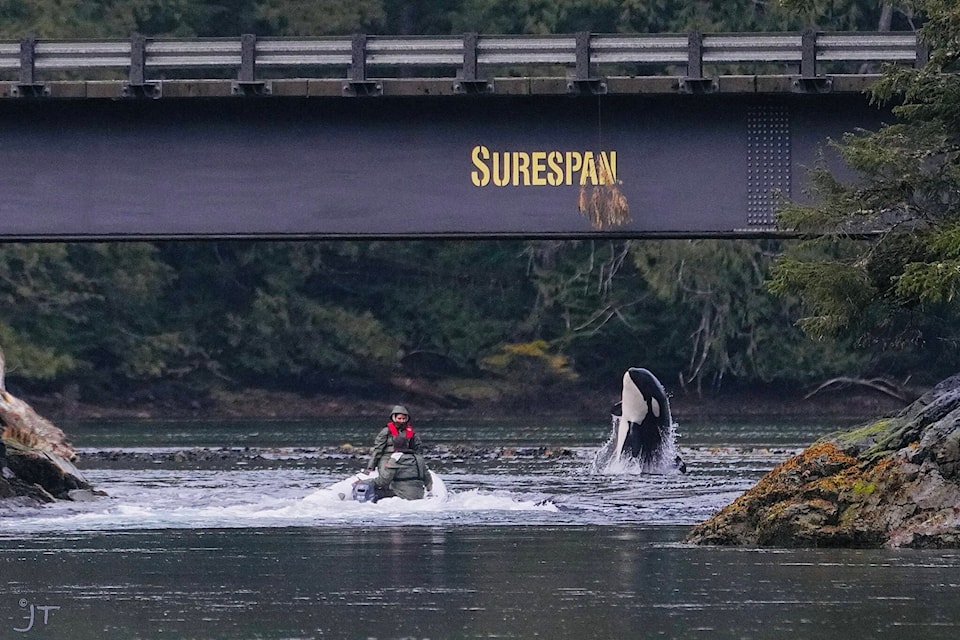The Ehattesaht First Nation is asking people to stay as far away as possible from kwiisaḥiʔis to give her the “best possible chance” to reunite with her family, says Ehattesaht Chief Simon John.
The Nation is concerned that kwiisaḥiʔis — the orca calf who spent a month stuck in the Little Espinosa Inlet Lagoon after her mother died from getting beached in March — has encountered boats since she swam out of the inlet earlier this week.
The Nation and DFO have been monitoring kwiisaḥiʔis since she swam out of the inlet on Sunday, and have heard reports of interactions with vessels in the area.
“Right from start the Nation has been concerned over the Brave Little Hunter being habituated and this factored heavily into all planning,” a release from the Nation says.
On Friday, DFO sent an update saying that “Brave Little Hunter now has the chance to meet up and join a passing Bigg’s pod. Bigg’s pods are very adaptable and open to adopting young animals and we remain optimistic about her chances of survival. However, it is vitally important to her survival that she is not disturbed and further habituated to people or boats.”
The release says that over the past month, those involved in kwiisaḥiʔis’ rescue effort have learned that young orcas are very adaptable and impressionable.
“Of course, everyone was very worried about her starving,” Chief Simon John said in a press release. “When she first took the seal meat offered to her there was a mixture of relief that she wouldn’t starve but also worry that she would be associating boats with food. When she was seen eating herring, something the Biggs adult whales do not do, we were happy because that meant she would not be dependent on being fed and more likely than not she had learned to feed herself along the way.”
That means they are confident she can survive on her own.
“We have even heard she is chasing sea otters. We also know she is in the best possible location now; it’s a natural and known area, she can hear and be heard by her family as they pass by,” Chief John said. “The most important issue now is that she be left alone. No matter how interesting or connected we may feel, being with humans is exactly the wrong thing for kwiisaḥiʔis.”
Ehattesaht and the DFO Marine Mammal Response Unit will be increasing boat patrols in the area, and will be using drones and helicopters to try to prevent kwiisaḥiʔis’ contact with boaters.
“If you are travelling through the area please remember there is a small orca. If you do see her change your course to avoid her. Do not stop to watch her. Under no circumstances are you to engage with her,” he said.
DFO has rules in place to prevent interactions between humans and whales. Bigg’s killer whales are Threatened under the Species at Risk Act, and the rules in place require everyone to keep at least 200 metres away from killer whales.
“This would be the barest minimum that we would hope for to give kwiisaḥiʔis the best possible chance. We have all worked so hard for her and we cannot let up now.”
The full rules can be found online here.
